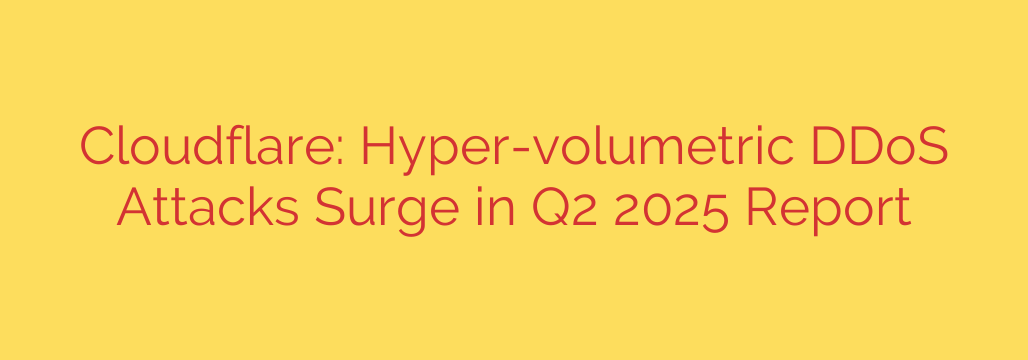
Q2 2025 Sees Unprecedented Surge in Hyper-Volumetric DDoS Attacks
The digital landscape is under increasing siege. Recent data reveals a disturbing trend: hyper-volumetric Distributed Denial of Service (DDoS) attacks are escalating at an alarming rate. The second quarter of 2025 witnessed a significant surge in these malicious activities, posing a severe threat to online infrastructure and businesses worldwide.
One of the most concerning findings is the sheer scale of these attacks. We’re seeing attacks reaching unprecedented levels of traffic volume, often exceeding terabytes per second (Tbps). These massive floods of malicious requests are designed to overwhelm targeted servers and networks, rendering them inaccessible to legitimate users. This can lead to significant disruptions, financial losses, and reputational damage for affected organizations.
Several factors contribute to this escalating threat. The increasing availability of powerful botnets, fueled by compromised Internet of Things (IoT) devices, is a primary driver. These botnets, controlled by malicious actors, can generate vast amounts of traffic, making them ideal for launching hyper-volumetric attacks. Additionally, the sophistication of attack techniques is constantly evolving, making them more difficult to detect and mitigate. Attackers are employing increasingly complex methods to obfuscate their traffic and evade traditional security measures.
Industries particularly vulnerable to these attacks include gaming, finance, and e-commerce. These sectors are attractive targets due to their high reliance on online services and the potential for significant financial gain. However, no organization is entirely immune. Any business with an online presence is at risk of being targeted by a DDoS attack.
So, what can you do to protect your organization from this growing threat? Here are some essential security tips:
- Implement a robust DDoS mitigation strategy: This should include a combination of proactive measures, such as traffic filtering and rate limiting, as well as reactive measures, such as traffic scrubbing and blacklisting.
- Employ a multi-layered security approach: Don’t rely on a single security solution. Implement a combination of firewalls, intrusion detection systems, and web application firewalls (WAFs) to provide comprehensive protection.
- Monitor your network traffic: Continuously monitor your network for suspicious activity and anomalies. Early detection is crucial for mitigating the impact of a DDoS attack.
- Keep your systems updated: Ensure that all your software and hardware are up to date with the latest security patches. Vulnerable systems can be exploited by attackers to launch DDoS attacks.
- Consider using a content delivery network (CDN): CDNs can help distribute your content across multiple servers, making it more difficult for attackers to overwhelm your origin server.
- Regularly test your incident response plan: Simulate DDoS attacks to test your organization’s ability to respond effectively. This will help you identify weaknesses in your security posture and improve your response time.
- Educate your employees about DDoS attacks: Train your employees to recognize and report suspicious activity. Human error is a common cause of security breaches.
The surge in hyper-volumetric DDoS attacks highlights the importance of proactive security measures. By implementing a robust DDoS mitigation strategy and staying informed about the latest threats, you can significantly reduce your risk and protect your organization from the potentially devastating consequences of these attacks. The threat landscape is constantly evolving, so continuous vigilance and adaptation are essential for maintaining a secure online presence.
Source: https://blog.cloudflare.com/ddos-threat-report-for-2025-q2/








